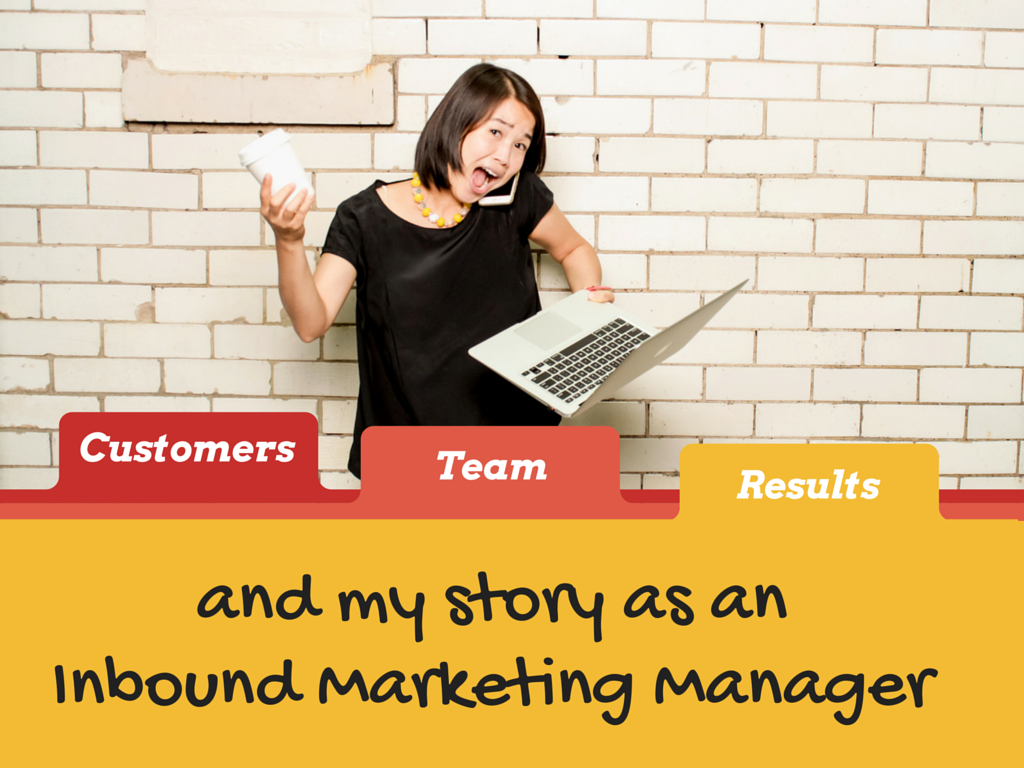- Aug 28, 2015
- By Sarah Tsai
- In Marketing Strategy and Planning
What to Expect During the First Few Weeks as an Inbound Marketing Manager


In late June, I accepted my new role as Cleriti’s Inbound Marketing Manager (or as we internally call it - an IMM). I was excited to have the opportunity to help clients develop our Inbound capabilities and manage the content strategy for our customers.
In a nutshell, I am the traffic controller that sends blog posts to clients each week that are written by freelancers and industry subject matter experts. I then receive customer feedback and relay that information to my team. The client decides what would ultimately look/read best for their business. My first week on the job, my team was asked to rally behind a product launch, a press release, and a trade show event. We are constantly asked to troubleshoot web, mobile and e-mail issues due to clients using platforms we recommended against and websites that we did not create. Those are all tasks that distract us from creating a strategic marketing process entirely, which is at the core of our business and services we fulfill. I am not unfamiliar with marketing, but being tasked with using a new marketing technology platform (HubSpot), and in addition being measured by client satisfaction indicators that are slightly out of my control made me feel like the new kid in school.
My number one objective as an Inbound Marketing Manager is to establish common goals between my internal team and external clients. I do my best to clearly communicate with the internal team on the client’s overall business objectives and how our team plays a part in their goals and becomes an extension of our customers marketing department. With my clients, I got up to speed as quickly as I could on how the accounts are set up as well as what it is that they want to get out of their inbound marketing strategy. I set realistic goals and identified short-term result areas so that the clients could quickly see us working hard on their behalf. I carved out time to research industry best practices to make sure we were bringing the latest thinking, complemented by the technologies and measures that are currently available, into our tactical execution.
On the Job, These are 3 Lessons I have Learned Very Quickly:
1. Content marketing has to be a key part of your overall marketing strategy.
Want prospects to come visit your website? Google will NOT serve up your site to viewers if they don’t see you as a credible and high quality resource. Want positive engagement with your brand? Listen first to what is being said and what people care about before talking to them and designing your advertising. Otherwise, it may end up being a “one way” conversation. Want to have continuous conversations with a lead? You must have analytics! Knowing the flow of your traffic visits (where the visitor came from, what pages visitors viewed, and for how long they stayed on a page) will allow you to reverse generate the purpose and intent of those visits and therefore inform the type of engagement/conversation you could be having with a prospect. Too many companies have emails set up to autosend as soon as a visitor took an action on their site. Sure, you can see how many people open and click — so what? Can you tell if a LEAD repeat visited your website, and which pages? Did you give them a reason to keep looking on your site for interesting information that keeps them engaged? Advertising, press releases, brochures, and sale sheets only get you so far. A streamlined content marketing strategy coupled with the right type of nurturing campaigns and tracking analytics moves a potential customer to become a prospect, a prospect to a qualified lead, and a qualified lead to a customer, proving content is a key strategic element for your marketing process.
2. HubSpot provides incredible resources.
I have two clients that are in the software business — one in hospital analytics/cost accounting, and the other in marketing attribution. When I work on their accounts, I am always curious if there is a service component that provides continuous support of the user in navigating the software’s capabilities and leveraging it to its fullest potential. My phone calls to HubSpot’s technical support team have never encountered a long wait time. When I have client specific questions, a designated person who is knowledgeable in both technology and marketing answers them.
Hubspot’s people-centric analytics and tracking ability down to the individual level is pretty incredible. It lets me know where the web visitors come from, and once a prospect fills out a form, I am able to customize my marketing to that individual. I can follow this person/lead, who in some cases represents millions of dollars in value, along their path of engagement and initiate interactions at the appropriate time.
3. Give clients what they want, not what they ask for.
The age old saying that someone who tries to please everyone pleases no one is very true when it comes to managing a complex situation that involves multiple stakeholders and a team of diverse individuals that must work together to deliver on a common objective. As a leader and manager, the key is to focus on the objective. Most often, the objective is not “obvious” and you have to ask certain questions and be a good observer to sense the intent of the request. There are also times when tough conversations must take place before we pick and choose our strategy and plan of attack.
In the midst of chaos, one thing keeps me anchored. If we don’t challenge ourselves to look out for the best interest of the client — be it help them develop a strategy around managing their online presence, ask them how they want to differentiate their value proposition from their competitors, or just plainly get more explanation around the task that we are being asked to do — then what point is there to spend time and effort on something that may yield a quick result, but ultimately never deliver on the purpose and intent of a broader marketing objective?
This Is Just the Beginning…
What keeps me going is the wonderful people I work with and a genuine interest in each client’s business. I come from an innovation background where the value of start ups and their potential breakthroughs can be remarkable and extraordinary. I also appreciate those who are in big corporations that are trying to move the needle forward, despite not seeing immediate results.
Overall, being an IMM is not easy as today’s new school customers fight old school boxed up ways of doing business. Clients employ us to be their inbound and content marketing agency, yet they often mistake us as a public relations firm. There is a big difference between today’s marketing methods such as telling your story and delivering value to your target personas by focusing on the issues and topics that they care about and the traditional ways of promoting your company. This very difference creates both internal and external conflicts with the results of our overall marketing campaigns and objectives. When I relay client requests to my team, I get pushback from my content team and graphics department. This lack of communication often leads to the production of materials we cannot use, which is a waste of both time and effort.
It has been eight weeks since I’ve taken the IMM role, and not a day goes by where I don’t see these elements play out in my day-to-day interactions. I am writing this with the hope that other account managers out there might see the value in someone sharing their personal experience. In seeing the strategies I use and where I tried and failed, it might spur some interesting thoughts and suggestions for continuous dialog.




